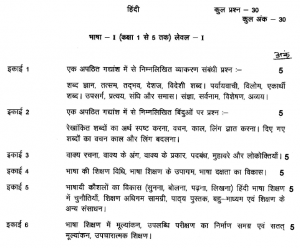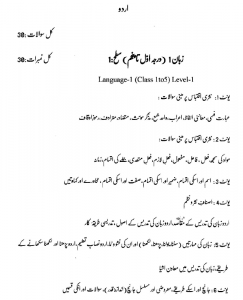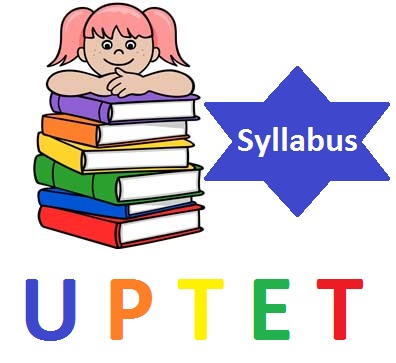UPTET exam pattern is little bit revised this time; As we know Uttar Pradesh Teacher eligibility Test ( UPTET ) is a eligibility exam for the recruitment of primary and upper primary teachers in the state .
In UPTET, there will be two exams on one day in two shifts :-
- Paper 1 – Exam for eligibility of Primary Teachers (Classes I-V)
- Paper 2 – Exam for eligibility of Upper Primary Teachers (Classes VI-VIII)
Jump To:
Exam pattern & Syllabus UPTET Paper 1 (Primary Teachers Classes I-V)
- In this paper, there will be 150 objective type questions, carrying 150 marks . It means one QUESTION consist of only one mark .
- There is no negative marking in this exam .
- You can take the QUESTION paper and the last part of answer sheet ( OMR ) with you, it will help you to calculate your marks with the help of answer key .
- The answer key will be posted soon on the website www.uptet.co.in
- The time duration for the exam is only 90 minutes; It means you will get a very short time of less than a minute for a QUESTION .
- During the examination; Calculator, log table, mobile phone or any other digital device will not be allowed .
Format of the QUESTION paper ( Paper 1 )
There will be four parts in the QUESTION paper :-
- Pedagogy
- Languages ( Hindi & English/Urdu )
- Mathematics
- EVS
| Subject | No. of Questions | No. of Marks |
| Pedagogy | 30 questions | 30 marks |
| Hindi | 30 questions | 30 marks |
| English / Urdu | 30 questions | 30 marks |
| Mathematics | 30 questions | 30 marks |
| Environmental Studies | 30 questions | 30 marks |
As we have described in the exam pattern section that there will be four parts in the Paper 1 of UPTET .
- Pedagogy
- Languages ( Hindi & English/Urdu )
- Mathematics
- EVS
Now take a look on the syllabus of each subject in this paper .
If you want detailed syllabus then please take a look on NCERT books from class 1st to 5th .
Pedagogy
There are basically five units in this subject and each unit consist of 6 marks .
Unit-1 (Marks-06)
- Child Development: Concept of growth and development, Principles and dimensions of development. Factors affection development (especially in the context of family and school) and its relationship with learning
- Role of Heredity and environment
Unit-2 (Marks-06)
- Meaning and Concept of learning and its processes. Factors Affection learning.
- Theories of learning and its implication
- How Children learn and think.
- Motivation and Implications for Learning.
Unit-3 (Marks-06)
- Individual Differences: Meaning, types and factors Affection Individual differences Understanding individual differences on the basis of language, gender, community, caste & relign.
- Personality: Concept and types of personality, Factors responsible for shaping it. Its measurement.
- Intelligence: Concept, Theories and its measurement, Multidimensional Intelligence.
Unit-4 (Marks-06)
- Understanding diverse learners: Backward, Mentally retarded, gifted, creative, disadvantaged and deprived, specially abled.
- Learning Difficulties.
- Adjustment: Concept and ways of adjustment. Role of teacher in the adjustment.
Unit-5 (Marks-06)
- Teaching learning process, Teaching learning strategies and methods in the context of National Curriculum Framework 2005.
- Meaning and purposes of Assessment, Measurement and Evaluation. Comprehensive and Continuous Evaluation. Constriction of Achievement Test.
- Action Research.
- Right to Education Act 2009 (Role and Responsibilities of Teachers)
Languages
English
Total six units are there carrying five marks each .
Unit-1 (Marks-05)
- Unseen Prose Passage
- Linking Devices, Subject-Verb Concord, Inferences
Unit-2 (Marks-05)
- Unseen Poem
- Identification of Alliteration, Simile, Metaphor, Personification, Assonance, Rhyme.
Unit-3 (Marks-05)
- Modal Auxiliaries, Phrasal Verbs and Idioms, Literary Terms: Elegy, Sonnet, Short Story, Drama.
Unit-4 (Marks-05)
- Basic knowledge of English Sounds and their Phonetic Transcription.
Unit-5 (Marks-05)
- Principles of Teaching English, Communicative Approach to English Language Teaching, Challenges of Teaching English: Language Difficulties, Errors and Disorders.
Unit-6 (Marks-05)
- Methods of Evaluation, Remedial Teaching.
Hindi
Total six units are there carrying five marks each .

Note – To view the image with more clarity please zoom into your browser or download the image and then watch it in a advanced image viewer .
Urdu

Mathematics
Unit-I
- Whole number up to one crore, Place Value, Comparison, Fundamental mathematical operations: Addition, Subtraction, Multiplication and Division; Indian Currency.
Unit-II
- Concept of fraction, proper fractions, comparison of paper fraction of same denominator, mixed fraction, comparison of proper fractions of unequal denominators, Addition and Substation of fractions. Prime and composite number, Prime factors, Lowest Common Multiple (LCM) and Highest Common Factor (HCF).
Unit-III
- University Law, Average, Profit-Loss, Simple interest.
Unit-IV
- Place and curved surfaces, plane and solid geometrical figures, prosperities of plane geometrical figures; pint, line, rey, line segment; Angle and their types.
- Length, Weight, Capacity, Time, measurement f area and their standard units and relation between them; Area and perimeter of plane surfaces of square and rectangular objects.
Unit-V
- Nature of Mathematics/Logical thinking.
- Place of Mathematics in Curriculum.
- Language Mathematics.
- Community Mathematics.
Unit-VI
- Evaluation through formal and informal methods.
- Problems of Teaching.
- Error analysis and related aspects of learning and teaching
- Diagnostic and Remedial Teaching.
Environmental Studies
Unit – I (Marks-05)
- Family Personal relationships, nuclear and joint families, social abuses (child marriage, dowry system, child labour, theft); addiction (intoxication, smoking) and its personal, social and economical bad effects.
- Clothes and Habitats – Clothes for different seasons; maintenance of clothes at home; handloom and powerloom; habitats of living beings, various types of houses; cleanliness of houses and neighboring areas; Different types of materials for building houses.
Unit—II (Marks-05)
- Profession – Profession of your surroundings (stitching clothes, gardening, farming, animal rearing, vegetable vendor etc.), small and cottage industries; major industries of Rajasthan State, Need for consumer protection, co-operative societies.
- Public places and Institutions – Public places like school, hospital, post office, bus stand, railway station; Public property (street light, road, bus, train, public buildings etc.); wastage of electricity and water; employment policies; general information about Panchayat, legislative assembly and parliament.
- Our Culture and Civilization – Fairs and festivals, National festivals; Dresses, food-habits and art and craft of Rajasthan; Tourist places of Rajasthan; Great personalities of Rajasthan.
Unit — III (Marks-05)
- Transport and Communication – Means of transport and communication; Rules for pedestrians and transport; Effects of means of communication on the life style.
- Personal Hygiene – External parts of our body and their cleanliness; general information about the internal parts of the body; Balance diet and its importance; Common diseases (gastroenteritis, amoebiosis, methaemoglobin, anemia, fluorosis, malaria, dengue.) their causes and methods of prevention; Pulse Polio campaign.
- Living Beings~ Levels of organisation of plants and animals, diversity of living organisms, state flower, state tree, state bird, state animal; knowledge of reserve forest and wild life (national parks, sanctuaries, tiger reserve, world heritage), conservation of species of plants and animals, knowledge of Kharif and Rabi crops.
Unit — IV (Marks-05)
- Matter and Energy – Common properties of substances (colour, state, ductility, solubility) various types of fuels; types of energy and transformation of one form into another; Applications of energy in daily life, sources of light, common properties of light. > Basic knowledge of air, water, forest, wetlands and deserts; different kind of pollution, renewable and non-renewable resources of energy in Rajasthan and concept of their conservation; weather and climate; water cycle.
Unit – V (Marks-05)
- Concept and scope of Environment Studies
- Significance of Environment Studies, Integrated Environment Studies
- Environmental Studies & Environmental Education learning Principles
- Scope & relation to Science & Social Science
- Approaches of presenting concepts Activities
Unit — VI (Marks-05)
- Experimentation/Practical Work
- Discussion
- Comprehensive and Continuous Evaluation
- Teaching material/Aids
- Problems of Teaching
Exam pattern & Syllabus UPTET Paper 2 Upper Primary Teachers (Classes VI-VIII)
- In this paper, there will be 150 objective type questions, carrying 150 marks . It means one QUESTION consist of only one mark .
- There is no negative marking in this exam .
- You can take the QUESTION paper and the last part of answer sheet ( OMR ) with you, it will help you to calculate your marks with the help of answer key .
- The answer key will be posted soon on the website www.uptet.co.in
- The time duration for the exam is only 90 minutes; It means you will get a very short time of less than a minute for a QUESTION .
- During the examination; Calculator, log table, mobile phone or any other digital device will not be allowed .
Format of the QUESTION paper ( Paper 2 )
Basically there will be three parts in the QUESTION paper :-
- Pedagogy
- Languages ( Hindi & English/Urdu )
- Mathematics & Science / Social Studies
In the third part; A maths & science teacher will go for Mathematics & Science and a social study teacher will go for social studies .
Take a look on the marks & questions for each part/subject :-
| Pedagogy | 30 questions | 30 marks |
| Hindi | 30 questions | 30 marks |
| English / Urdu | 30 questions | 30 marks |
| Maths & Science / Social Studies | 60 questions | 60 marks |
As we have described in the exam pattern section that there will be three parts in the Paper 2 of UPTET .
- Pedagogy
- Languages ( Hindi & English/Urdu )
- Mathematics & Science / Social Studies
Now take a look on the syllabus of each subject in this paper .
Pedagogy
Download the full syllabus of Pedagogy here
Languages
Download the full syllabus of Languages ( Hindi & English/Urdu ) here
Mathematics & Science
Download the full syllabus of Mathematics & Science here
Social Studies
Download the full syllabus of Social Studies here
If you want detailed syllabus then please take a look on NCERT books from class 1st to 8th.
UPTET 2015 Syllabus in Hindi
I have already provided full syllabus and exam pattern for Paper 1 & Paper 2 in my previous articles but as the test is for UP ( Uttar Pradesh ) candidates and we speak Hindi mostly so I am providing the same syllabus in Hindi . Take a look :-
सबसे पहले हम बात करेंगे, परीक्षा के स्वरूप के बारे में; जैसा की हम सब जानते हैं की UPTET में दो एग्जाम होंगे जो इस प्रकार हैं :-
Paper 1 – प्राथमिक शिक्षकों के लिए पात्रता परीक्षा (Classes I-V)
- इस पत्र में 150 वस्तुनिष्ठ प्रश्न, जिसके कुल150 अंक आपको मिलेंगे . इसका मतलब यह है कि एक सवाल का केवल एक अंक मिलेगा .
- इस परीक्षा में कोई नकारात्मक अंकन नहीं है.
- आप अपने साथ प्रश्न पत्र और उत्तर पत्रक के पिछले भाग (OMR) को ले जा सकते हैं, यह उत्तर कुंजी की मदद से आपको अपना रिजल्ट जानने में मदद करेगा
- Answer Key वेबसाइट www.uptet.co.in पर जल्द ही डाल दी जाएगी .
- परीक्षा के लिए समय की अवधि केवल 90 मिनट की है, इसका मतलब यह है कि आपको एक प्रश्न के लिए एक मिनट से भी कम समय मिलेगा .
- परीक्षा के दौरान कैलकुलेटर, मोबाइल आदि का प्रयोग नहीं करने दिया जायेगा .
इस पेपर में कुल चार भाग होंगे :-
- शिक्षणशास्र – ३० प्रश्न
- भाषाएँ (हिंदी और अंग्रेजी / उर्दू) – ३० प्रश्न हिंदी के लये और ३० प्रश्न अंग्रेजी या उर्दू के लिए
- गणित – ३० प्रश्न
- ईवीएस – ३० प्रश्न
Paper 2 – उच्च प्राथमिक शिक्षकों के लिए पात्रता परीक्षा (Classes VI-VIII)
- इस पत्र में 150 वस्तुनिष्ठ प्रश्न, जिसके कुल150 अंक आपको मिलेंगे . इसका मतलब यह है कि एक सवाल का केवल एक अंक मिलेगा .
- इस परीक्षा में कोई नकारात्मक अंकन नहीं है.
- आप अपने साथ प्रश्न पत्र और उत्तर पत्रक के पिछले भाग (OMR) को ले जा सकते हैं, यह उत्तर कुंजी की मदद से आपको अपना रिजल्ट जानने में मदद करेगा
- Answer Key वेबसाइट www.uptet.co.in पर जल्द ही डाल दी जाएगी .
- परीक्षा के लिए समय की अवधि केवल 90 मिनट की है, इसका मतलब यह है कि आपको एक प्रश्न के लिए एक मिनट से भी कम समय मिलेगा .
- परीक्षा के दौरान कैलकुलेटर, मोबाइल आदि का प्रयोग नहीं करने दिया जायेगा .
इस पेपर में कुल तीन भाग होंगे :-
- शिक्षणशास्र – ३० प्रश्न
- भाषाएँ (हिंदी और अंग्रेजी / उर्दू) – ३० प्रश्न हिंदी के लये और ३० प्रश्न अंग्रेजी या उर्दू के लिए
- गणित और विज्ञान / सामाजिक अध्ययन – गणित और विज्ञान में 60 प्रश्न या फिर सामाजिक अध्ययन में 60 प्रश्न
पूरा सिलेबस
अगर आप पूरा सिलेबस देखना चाहते है तो कृपया NCERT की हिंदी माध्यम की पुस्तके देखें, पहली कक्षा से आठवीं कक्षा तक |
